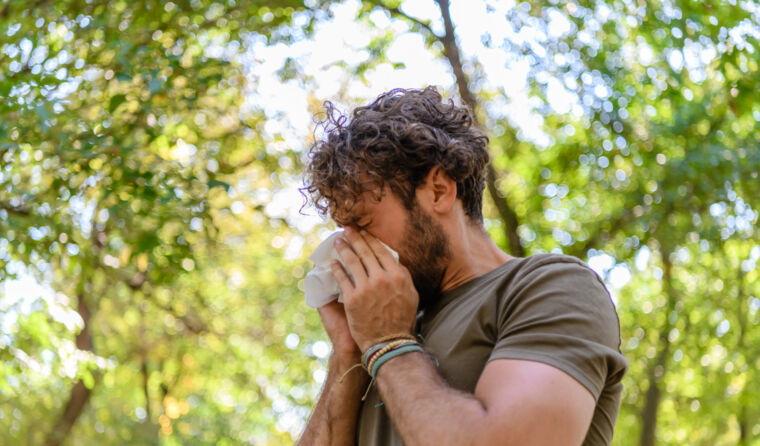News
Longer pollen season bringing more risk for asthma patients
Research shows the hay fever season is growing longer, and one expert says GPs are at the forefront of helping patients reduce complications.
 A UQ study shows Australian cities are experiencing longer pollen seasons due to climate change.
A UQ study shows Australian cities are experiencing longer pollen seasons due to climate change.
Research showing climate change is creating longer pollen seasons in some of Australia’s big cities brings an opportunity to ensure asthma and allergic rhinitis are well managed by patients, according to the RACGP.
Using up to three decades of data, the University of Queensland (UQ) examined pollen concentrations in Sydney, Melbourne, Canberra and regional Victoria to determine the impacts of weather patterns and climate change.
The study revealed that while levels fluctuated, grass pollen concentration had increased in Canberra by about 200% compared to the previous decade and Sydney experienced a 34% increase.
Meanwhile, Melbourne recorded a 13% drop on the previous decade, but had an earlier onset and longer duration of the core pollen season.
‘Our findings show that as temperatures rise across the globe, pollen seasons are expected to be longer which will make it challenging for people with allergies, asthma and other respiratory conditions,’ said Associate Professor Nicholas Osborne from UQ’s School of Public Health.
Other factors influencing airborne pollen concentrations included a region’s weather patterns as well as extreme weather events, such as droughts, heavy rainfall and El Niño weather patterns.
Dr Kerry Hancock, Chair of RACGP Specific Interests Respiratory Medicine, said tree and grass pollen seasons can vary so much between states and within local regions, but a good indication of the impact comes from listening to patients.
‘Patients will tell us when their hay fever symptoms start to be a bother or their asthma is more symptomatic, saying, “last year I was OK until October but this year I started needing the tissues in September”,’ she told newsGP.
‘The important thing is that patients with allergic rhinitis who also have asthma diligently manage both their asthma and their allergic rhinitis to reduce the risk of worsening asthma symptoms and asthma flare ups.’
Dr Hancock added that those who have rye grass allergy, which is one of the most common pollen allergies, and are also at risk of thunderstorm asthma due to their geographical location, should commence asthma preventer therapy in addition to their hay fever treatment.
‘A large proportion of our population have hay fever and, as GPs, we can do a huge service to them by enquiring about asthma symptoms (wheeze, chest tightness, cough, breathlessness) and investigating appropriately to confirm or refute an asthma diagnosis as outlined in the Australian Asthma Handbook.’
With most states moving out of hay fever season and edging closer to winter, Dr Hancock said it is a good opportunity to prepare for winter respiratory viruses and the potential impact they can have on patients with asthma.
‘It’s important for people with asthma to maintain their preventer therapy strategy, implement personal protective behaviours, such as handwashing, respiratory etiquette and social distancing, and improving ventilation to reduce the spread of respiratory infections,’ she said.
Co-author of the pollen study, Ms Arzoo Dhankhar from UQ and the Indian Institute of Technology Delhi, said the research provides valuable insights for health professionals, urban planners and researchers when exploring ways to manage health risks posed by allergenic pollen in a changing climate.
‘The more we know about what causes pollen concentration fluctuations, the better we can prepare health systems, support more low-exposure urban planning designs, educate the public, promote earlier intervention methods and collaborate across all sectors on a more targeted and coordinated response.’
Log in below to join the conversation.
allergic rhinitis allergy asthma hay fever respiratory conditions
newsGP weekly poll
How often do patients ask you about weight-loss medications such as semaglutide or tirzepatide?